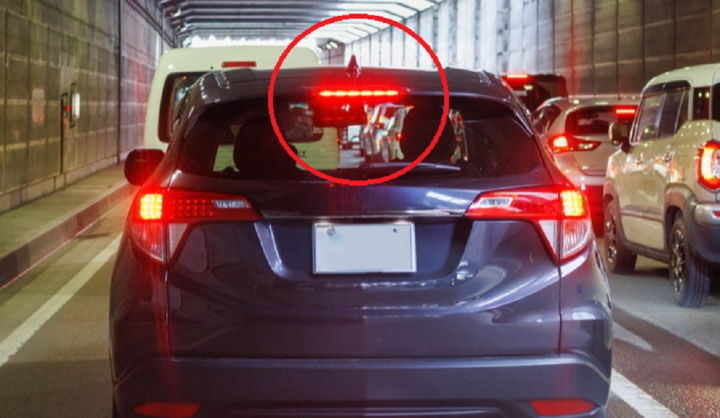Why do cars have central brake lights?
The central brake light placed high at the rear of the vehicle is a mandatory equipment that contributes to ensuring safety and minimizing rear-end collisions.
Unlike the front light system, the rear brake lights of each car, in addition to the two lights integrated in the taillight cluster, also have a third brake light, also known as the central brake light, which is long and placed high.

According to experts, the central brake light is an essential feature on a car, the main function is to signal other vehicles that the car is slowing down or stopping, and should be avoided to ensure safety. The central brake light is placed higher than the two main brake lights, helping to increase visibility for other drivers, thereby reducing collisions and accidents.
Thus, it can be said that the third brake light helps to increase "communication" between drivers, thereby reducing the possibility and severity of rear-end accidents. A series of research results show that cars equipped with third brake lights will help the driver behind increase the ability to recognize the activities of the vehicle in front. Thereby, it can reduce the possibility of rear-end collisions and accidents.
This detail is rarely noticed but is mandatory equipment on most car models today. Since 1986, the US and Canada have issued regulations requiring car models sold on the market to install a central brake light, placed higher than the two conventional brake lights that are already integrated on both sides of the taillight cluster.
This regulation was made after American psychologist - John Voevodsky conducted an experiment to install central brake lights on 343 taxis in San Francisco, to compare with taxis without this light cluster. After 10 months, the results showed that taxis with central brake lights had a 60.6% lower rate of rear-end collisions than taxis without lights.
This test was later repeated by the US National Highway Traffic Safety Administration (NHTSA) with a larger scale and number of vehicles. The results showed that center brake lights had a significant effect in reducing accidents and injuries.
In 1990, Australia and New Zealand also issued this regulation while European countries applied regulations on lighting/signal equipment installation since 1998. Up to now, the central brake light placed high at the rear of the vehicle has become standard and mandatory equipment on car models.
Nowadays, the central brake light cluster has been developed and equipped with more modern technology by many car manufacturers. By installing an adaptive brake light system, when the car in front brakes suddenly, the anti-lock braking system (ABS) is activated, the brake light will flash quickly to warn the car behind.
Given the importance of the central brake light, car users need to regularly check and monitor whether this light cluster on the car is operating properly or not.

